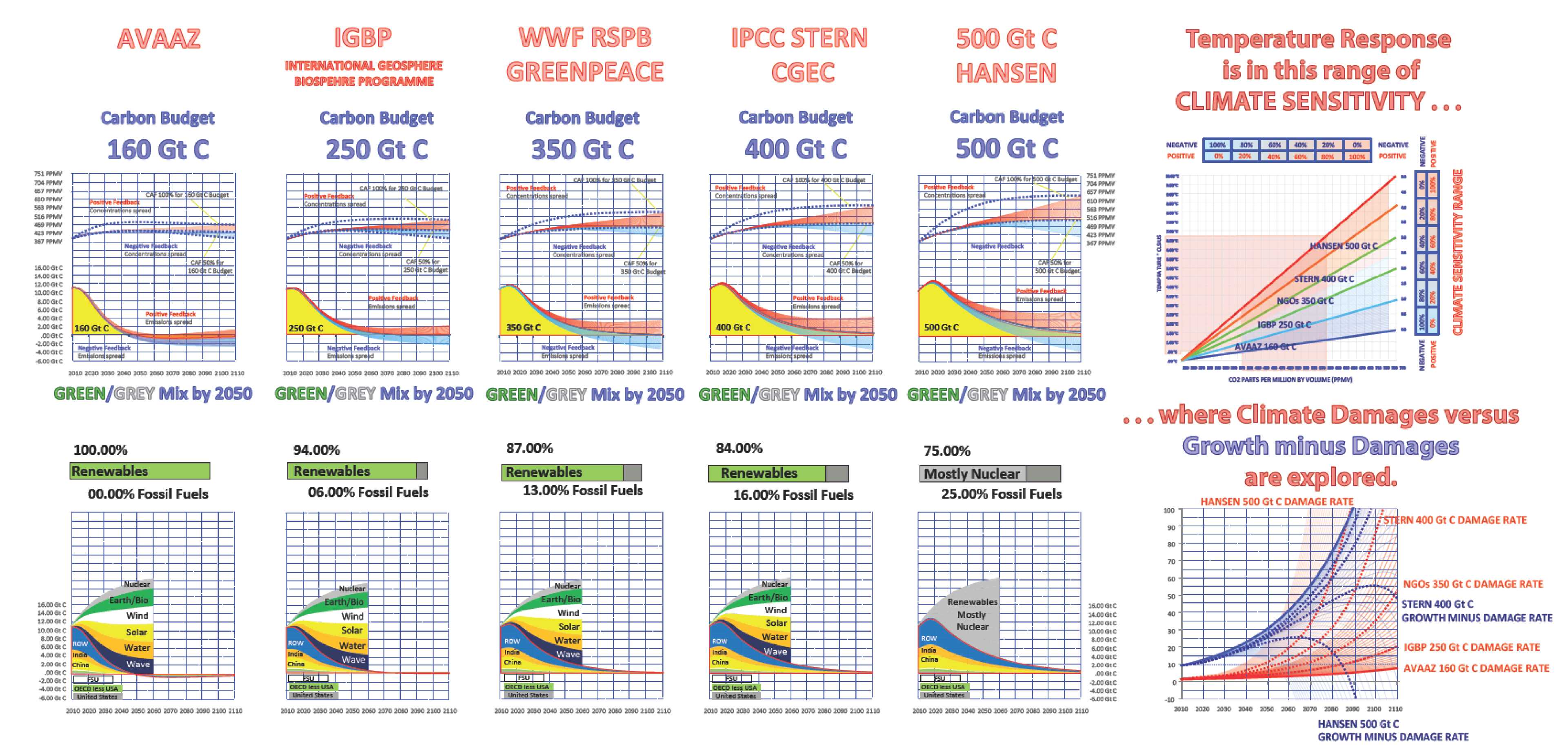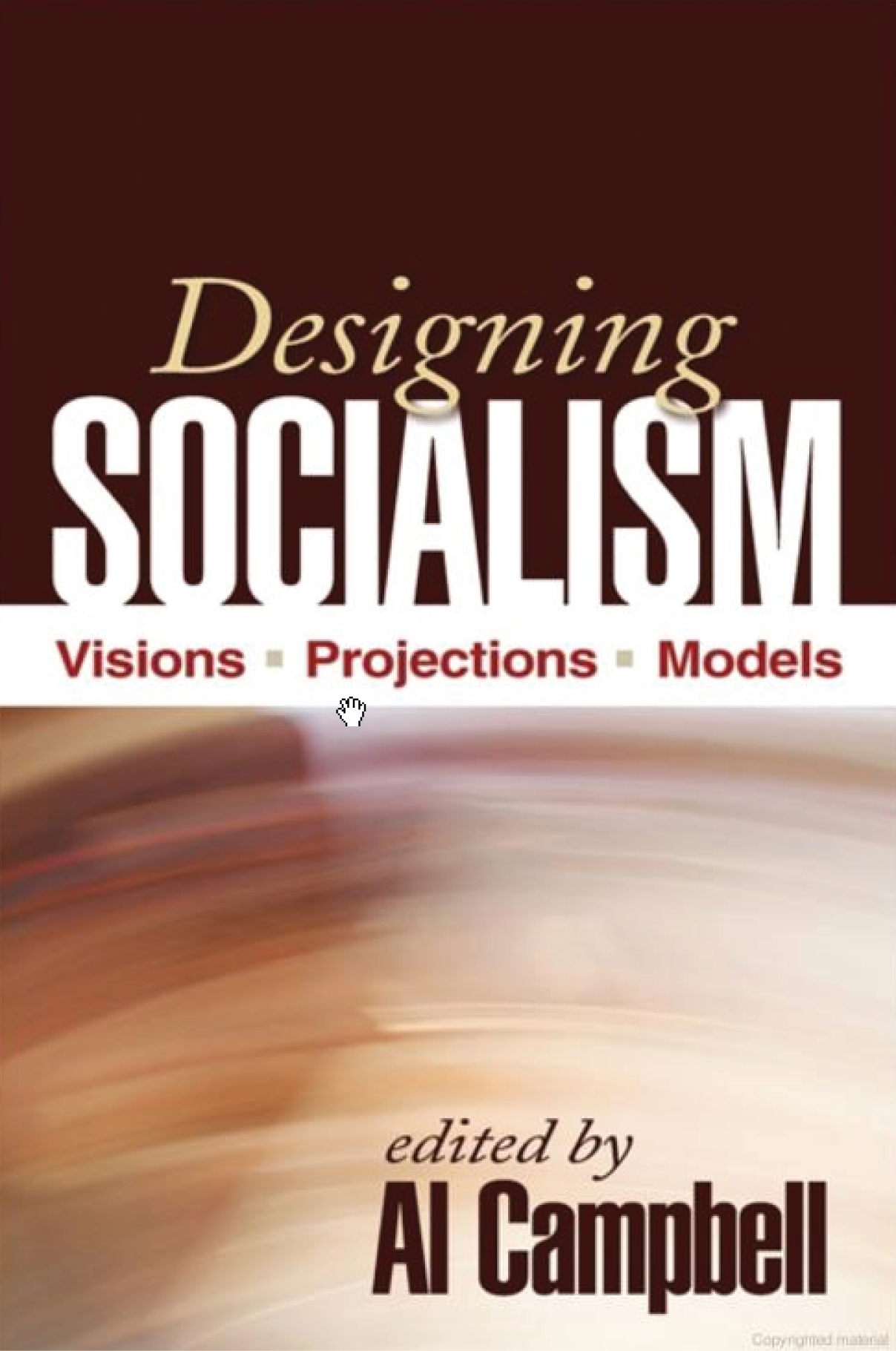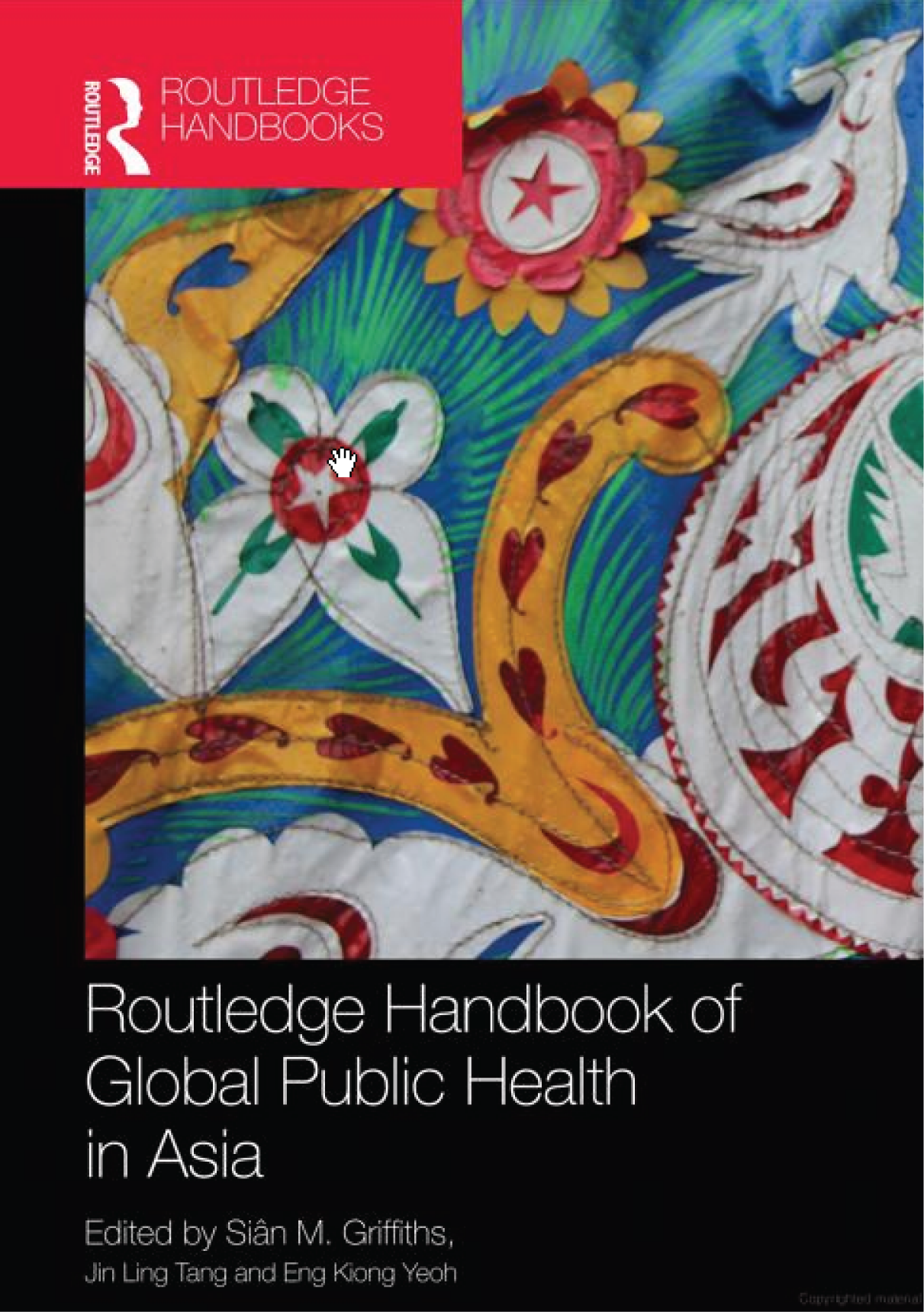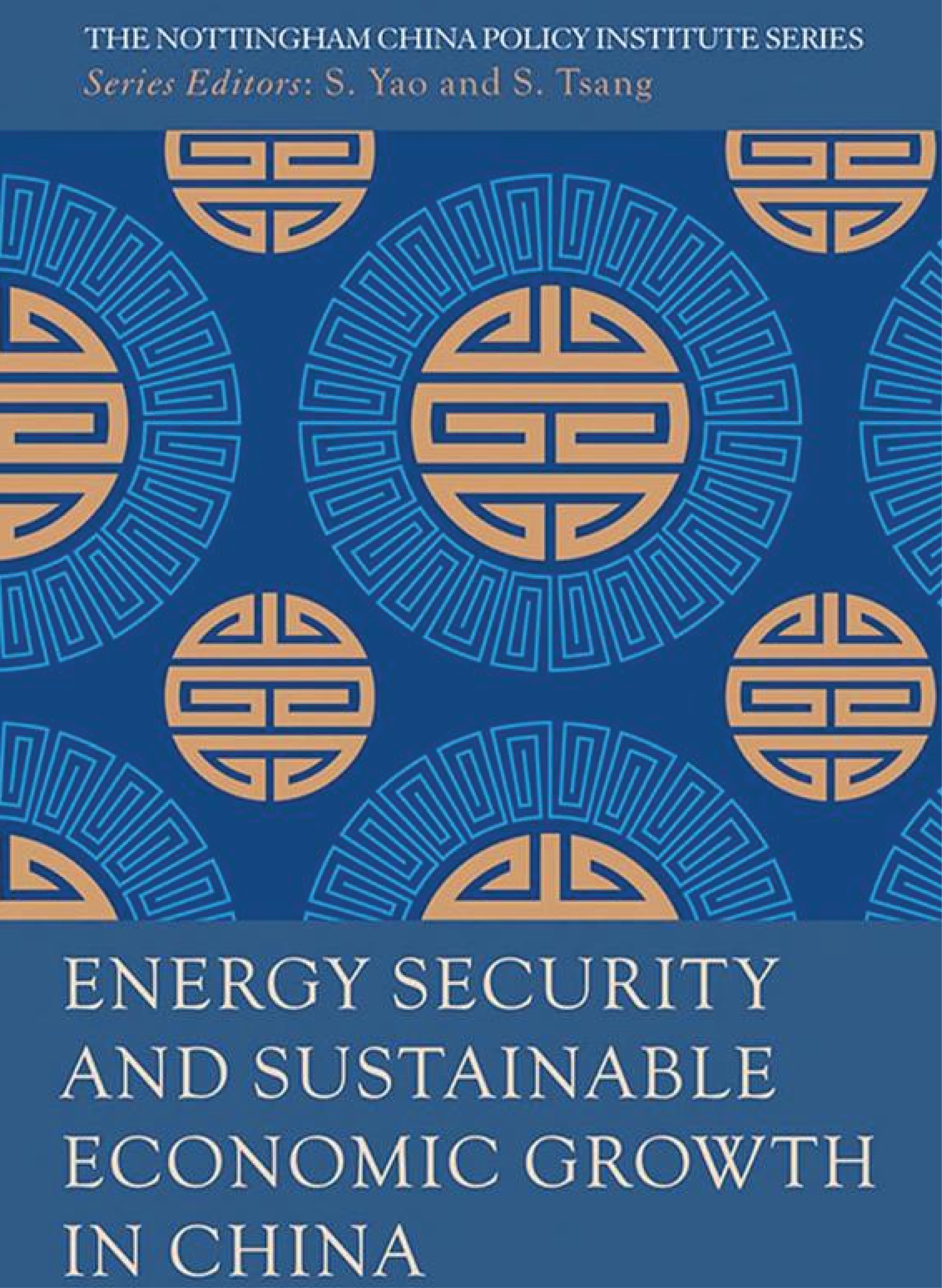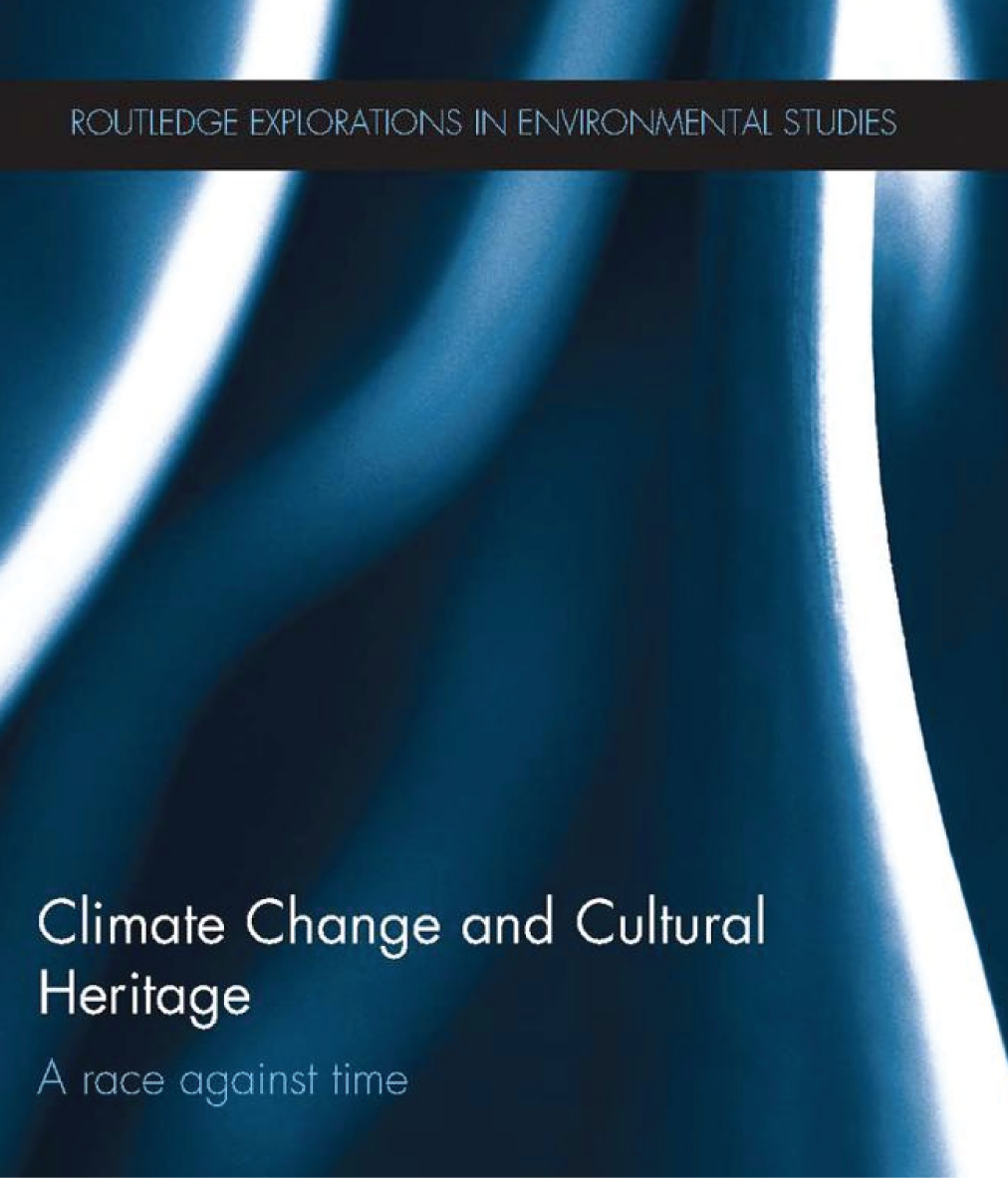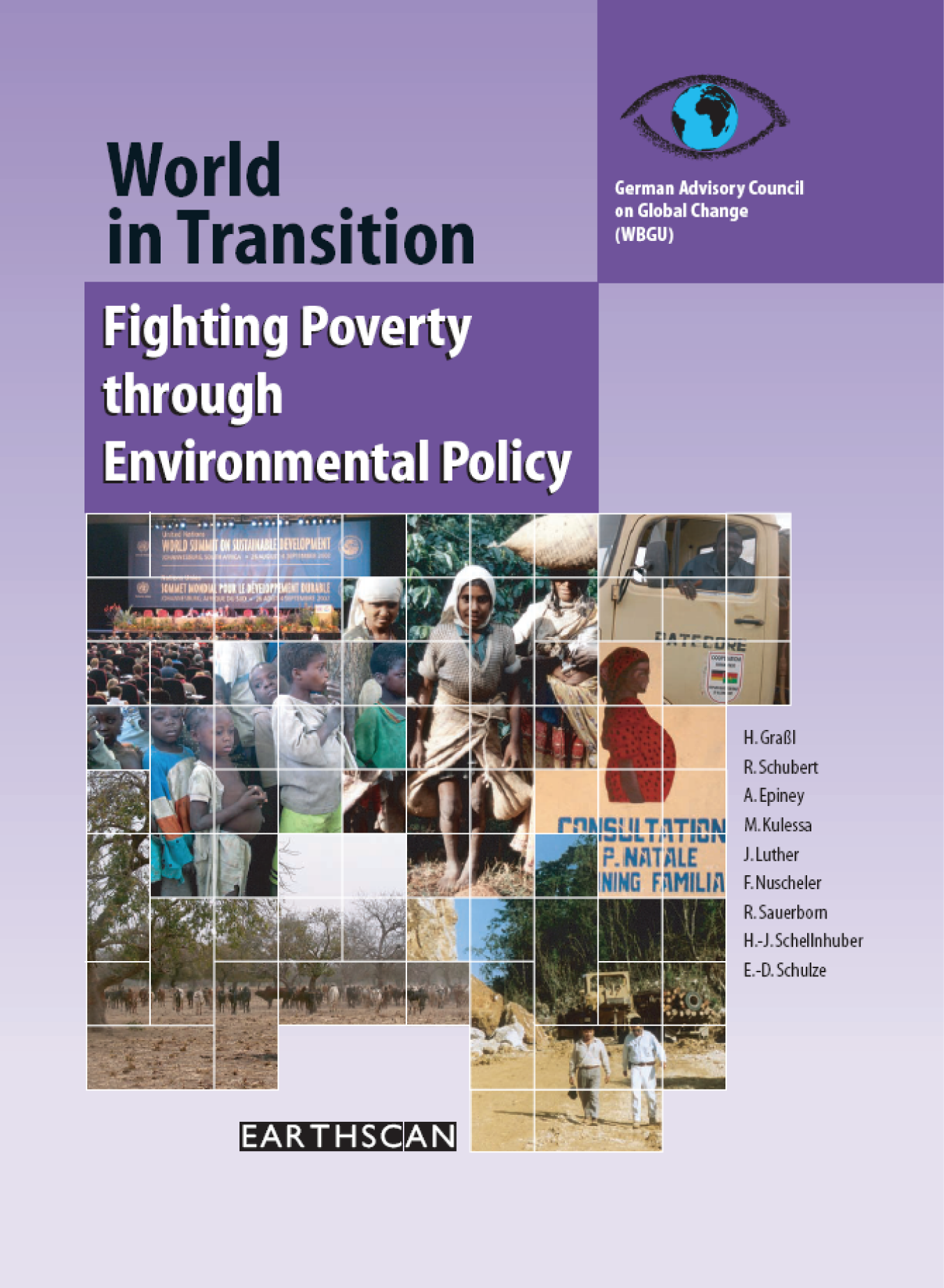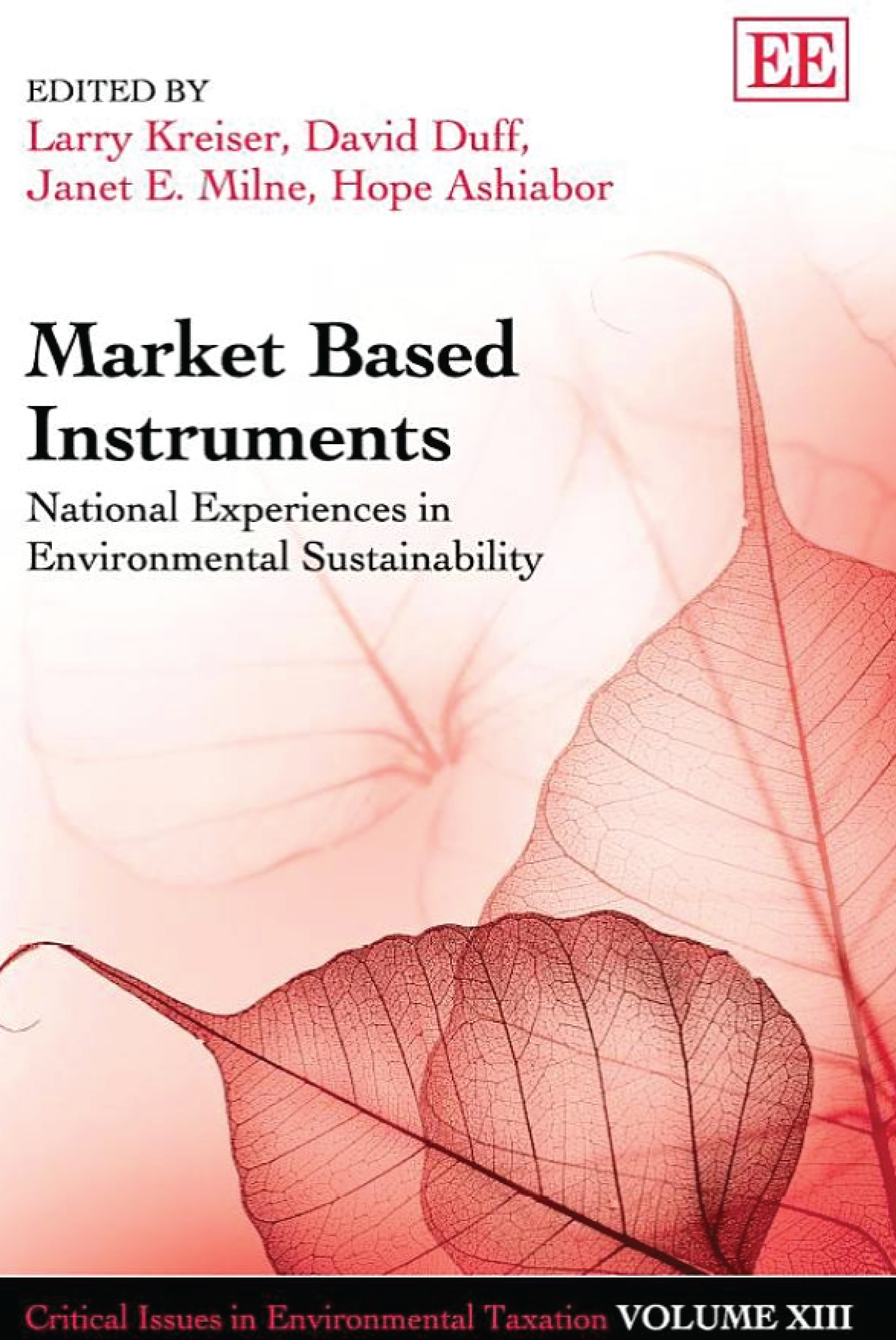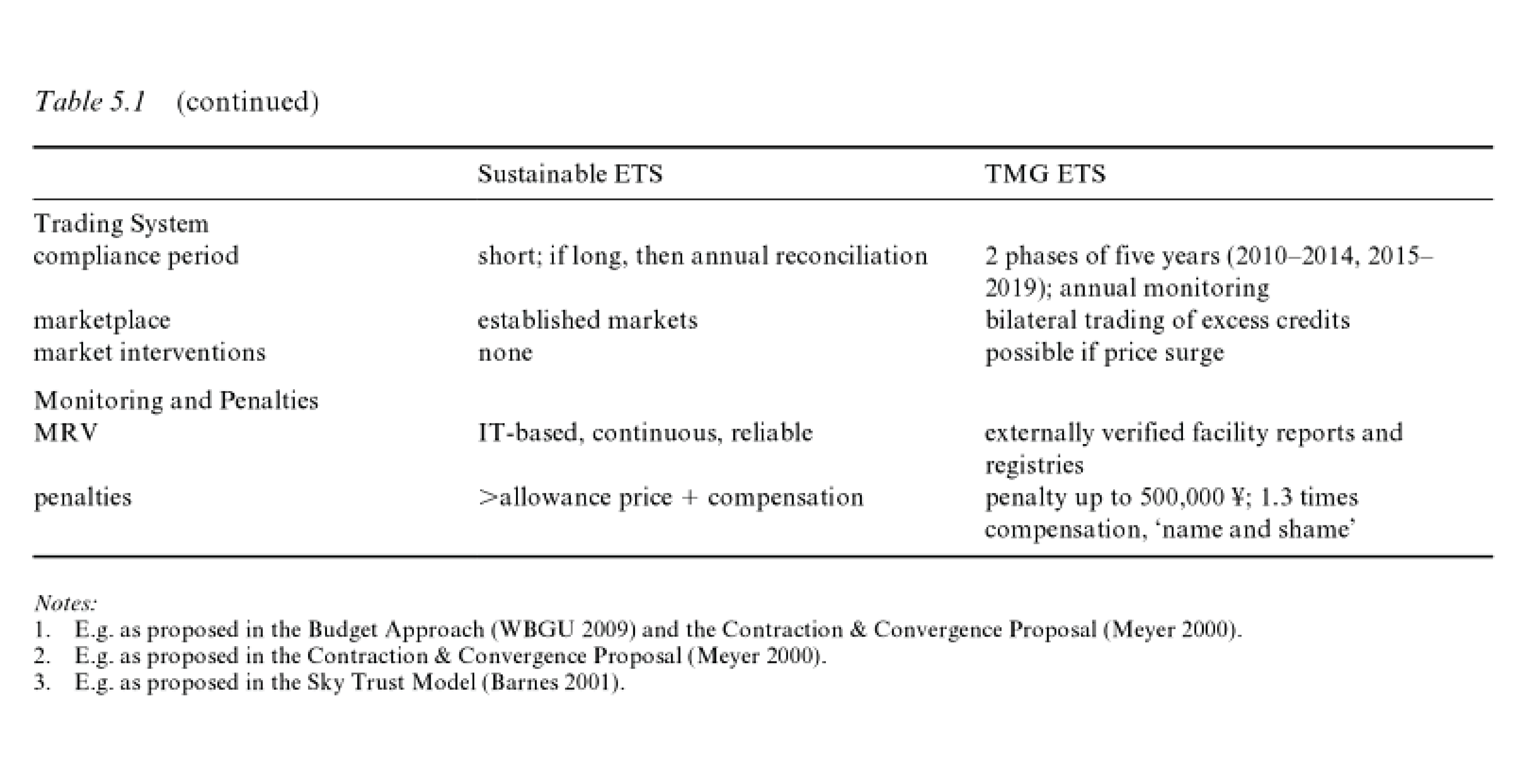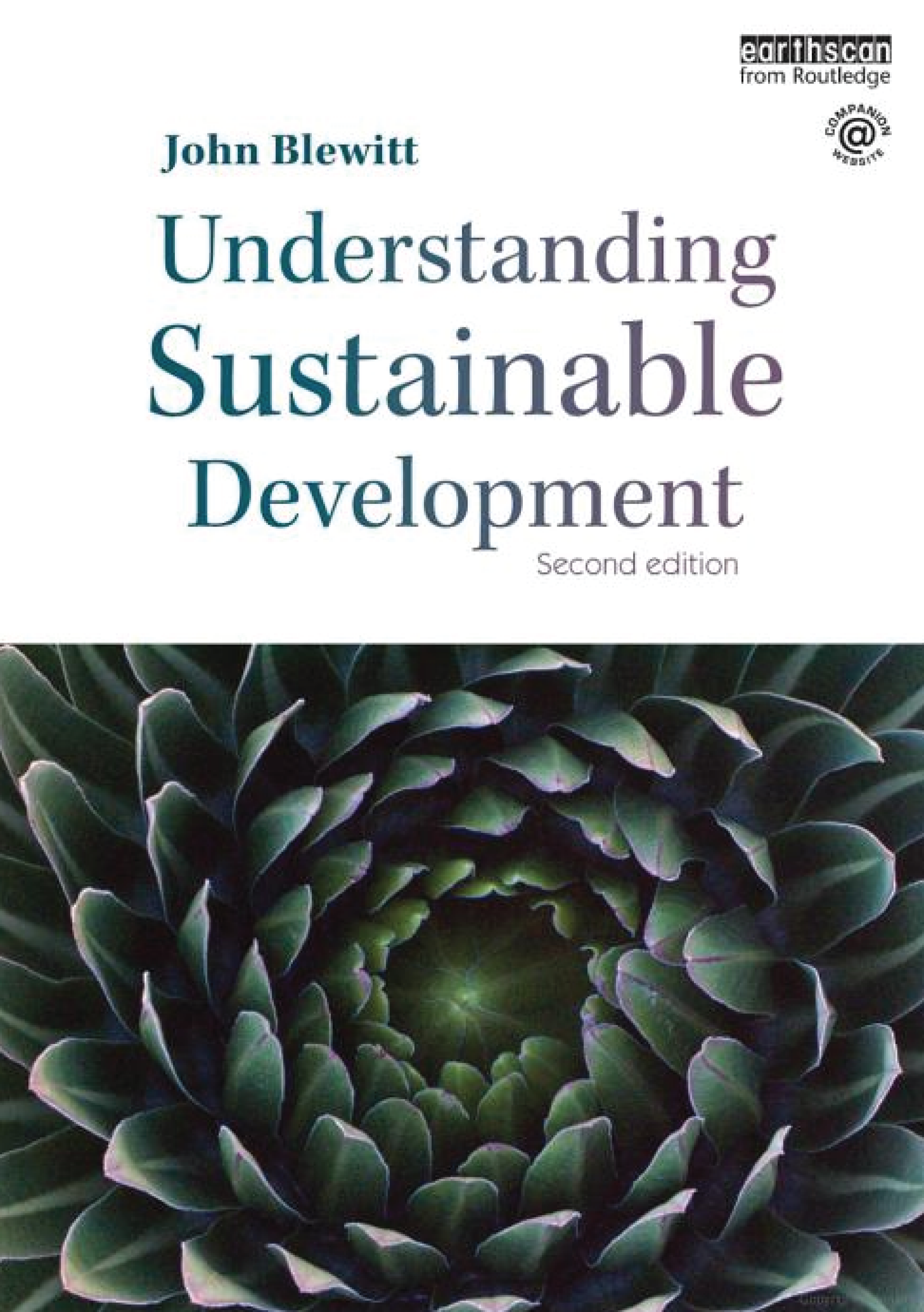Politically modleling future climate with Carbon Budgets from reckless to precautionary in descending order: -
- Hansen - 500 Gt C
- Stern - 400 Gt C
- NGOs - 350 Gt C
- IGBP - 250 Gt C
- AVAAZ - 160 Gt C
03 September 2014 - "C&C must be generalized to all resource use." Designing Socialism ed Al Campbell
The prospect for “socialist growth” in any long-term planning perspective has to be considered in the context of the ecological constraints imposed by the Earth’s finite “carrying capacity”.Socialist values entail equal access to the use of ecological resources, which necessarily involves massive redistribution both among countries and within countries.
Given the fact that currents we are using one-and-a-half times the carrying capacity of the Earth and it would take three Earths to equalize per capita greenhouse gas emissions at the UK level (and considerably more at the US level), the global policy of ‘Contraction and Convergence” first proposed in relation to greenhouse gas emissions must be generalized to all resource use.
In the developed world, socialist societies, far from pursuing socialist growth, need a period of what has been called ‘de-growth’, until they have converged on the (lower) sustainable per capita global steady state level of resource use.
By the same token, poorer countries need what is likely to be a fairly long period of growth in order for them to reach the same steady state level.
Designing Socialism: Visions, Projections, Models
By Al Campbell
03 September 2014 - "Spotlight feature on C&C" Routledge Handbook of Global Public Health in Asia Sian Griffiths et al
A ‘Spotlight’ feature in the BMJ on 27th March 2014 2012. This was a special issue on the links between climate change and health, with eight papers from experts covering the science, health risks, politics and policies, resource security, ‘Contraction and Convergence” and identifying what needs to be done.
Routledge Handbook of Global Public Health in Asia
edited by Siân M. Griffiths, Jin Ling Tang, Eng Kiong Yeoh
SPOTLIGHT: CLIMATE CHANG
British Medical Journal (BMJ)
The most feasible present framework that embraces these principles is contraction and convergence (C&C). C&C is based on the science of limits and the logic of global rights. The global total of permitted emissions is calculated so as to achieve the objective of limiting and stabilising atmospheric carbon concentrations below the level beyond which runaway climate change becomes unavoidable (presently thought to be about 400 parts per million). This calculated amount of carbon (the global carbon budget) provides the quantum from which an inclusive, global, equal rights per capita entitlement of carbon is derived; an entitlement that will go to each adult. Emissions trading can then take place within the context of this scientifically calculated carbon budget and the rights based mechanism for distribution.
The implementation of a framework founded on these principles will require tough negotiation, particularly around the speed of convergence to an equal per capita entitlement of carbon dioxide emissions, which can be no more than one and a half tonnes per person by 2050 (assuming a global population of 9 billion). Calculation of the initial carbon budget takes account of the present capacity of the global sinks: the oceans, soils, forests, and other flora that absorb CO2. If these sinks diminish, C&C enables the necessary recalculation; the contraction and convergence framework has the capacity to be modified in relation to evolving risks.
How will C&C work?
The equal per capita entitlement of carbon emissions can be pre-distributed as carbon coupons to consumers who could then negotiate the sale of these coupons. Under-consumers (generally the poor) will have coupons to sell to over-consumers (generally the rich). Market forces will work for the poor as well as to reduce carbon emissions; a key feature of the scheme. Putting the poor in control is a crucial development goal, as evidenced by the recent moves by donor agencies such as the International Red Cross to simply give cash to the poor. Recent publications testify to the efficacy of this approach. Equal entitlement under C&C has the added advantage that, in the early stages of the implementation of the framework, rapidly industrialising countries such as China, India, and Brazil (which are still relatively low per capita emitters of carbon) will be beneficiaries.
Credits (entitlements) will be issued by the global institution that oversees global sustainable development and agrees and implements C&C. C&C envisages that a greater portion of these entitlements are delivered to individuals or small collectives. This commitment can be written into the global agreements. So also can the proportion of the entitlements that would be held by the country level group to cover communal facilities such as schools and hospitals. For instance, in the UK, the proportion of carbon emitted by collective rather than individual actions is around 40%, an indication of the proportion of entitlements that the UK would hold centrally.
The widespread uptake of microcredit and the penetration of electronic communication, especially mobile phone technology, provides a route for implementing C&C in poorer countries. And although C&C encourages low carbon solutions, it does not seek to define those solutions for any particular group. The agency of individuals and communities to use resources as they think best makes C&C nonintrusive and is one of the socially attractive properties of the scheme.
No other framework quantifies allowable carbon emissions against an atmospheric CO2 concentration. No other framework allocates entitlements of this amount in a way which is to the advantage of underprivileged people in both the countries that are yet to industrialise and the rapidly industrialising countries. These unique features account for the significant level of global support for C&C, support which will be essential to getting the framework implemented. During the implementation of C&C, a period of no more than a few years, a low carbon development fund of at least $150bn must immediately be established. Much of the money could be raised by a tax on airline tickets and imposition of a $5 tax on each of the 20 billion barrels of oil used by OECD countries each year, or through the introduction of a financial transaction tax as advocated by Nobel prize winning economist James Tobin.
Time is of the essence. This is well understood by health professionals. After any serious trauma, a patient’s chances of recovery are much greater if treatment is started within one hour of the event: the so called golden hour. Our traumatised globe is nearing the end of its golden hour. For the sake of present and future generations, we have to move quickly for our interventions to successfully heal the globe. An agreement to implement C&C cannot be delayed.
Robin Stott - Contraction & convergence:
the best possible solution to the twin problems of climate change and inequity.
03 September 2014 - "C&C; countries converge on global per capita average." The Economics of Climate Change China Fan Gang et al
‘Contraction and Convergence” (C&C) is a hybrid framework combining grandfathered emissions rights with per capita emissions rights, with a gradual transition from the former to the latter over a specified number of decades.
Countries whose emissions start above the global average would receive allowances that gradually trend down to the global average, while countries whose emissions start below the global average would receive allowances that gradually trend up to the global average.
(GCI 2000).
03 September 2014 - "Technology Diffusion under C&C; CGE Analysis of China." Energy Security & Growth in China; Maria Talamantes03 September 2014 - "C&C will happen when shortages threaten survival." Climate Change & Cultural Heritage Peter Smith
Many environmentalists are committed to the theme of ‘Contraction and Convergence”, meaning that CO2 mitigation policies must immediately produce equality in per capita emissions at a level which halts global warming. This would demand fundamental changes in human behaviour. Such changes will never happen because of moral pressure. Only when circumstances, like shortage of food, water or energy threaten survival will change happen. By then it could be too late.
Climate Change & Cultural Heritage: A Race Against Time
Peter F. Smith
02 September 2014 - "WBGU recommends German Federal Government press for C&C." Worlds in Transition; WBGUWBGU recommends that at the forthcoming negotiations, the German Federal Government press for the rapid integration of all states into a contraction and convergence regime.
Emissions trading In the first commitment period under the Kyoto Protocol, emissions trading has been limited to industrialized countries. If extended in the future to newly industrializing and developing countries, emissions trading would replace the CDM and could then result in considerable financial transfers to poorer countries. However, given that negotiations on future commitment periods have not yet begun, estimates of potential financial transfers generated by emissions trading can only be hypothetical. WBGU has proposed committing all countries to limit their emissions and participate in emissions trading in the future in line with the contraction and convergence approach (WBGU, 2004).According to model calculations by WBGU, 5 Reducing poverty and protecting the environment 247 emissions trading would result in cumulative transfer payments of US$8,000,000 million to 12,000,000 million from OECD and transition countries to developing countries in the period up to 2100. This corresponds to annual average transfers of US$84,000 million to 128,000 million – whereby actual annual transfers are subject to considerable variation over time. These payments would make a significant contribution towards meeting the costs of emission reductions in developing countries (WBGU, 2003). For the upcoming negotiations WBGU recommends pushing for a rapid integration of all countries in a regime based on contraction and convergence to help mobilize the necessary funds in this way.
02 September 2014 - "C&C; Sensible, Fair, Just, Honourable, Common Sense." Bob Brown Leader Australian Greens
Memo for a Saner World
Bob Brown - Leader of the Australian Greens
The world's wealthiest countries are the most culpable. The richest 20 per cent of the world's population burn 80 per cent of its fossil fuels, producing 80 per cent of the problem gas. The remaining 80 per cent of people produce just 20 per cent - we in the wealthy West generate sixteen times as much greenhouse gas per person as those in developing countries. In the developed countries, Australians, followed by the Americans, are the worst polluters of all. Every one of us should put that statistic in our pipe and smoke it.
Here is a picture more of greed and studied ignorance than gloom and doom. The latter can be fixed if the former are given up. This is a moral challenge calling for a political response. And there is a good solution. Aubrey Meyer, the founder of London's Global Commons Institute, calls it 'contraction and convergence'. I would also call it 'one planet, one person, one value'. It is a just and honourable way out of the global warming terror, and one which is every bit as much common-sense as it is a hard ask.
Stage one of the plan is to win international agreement on a level of atmospheric carbon dioxide that would ensure the Earth's ecological, social and economic future. Let's say that this is 325 parts per million, roughly halfway between the past natural level of 280 ppm and the current, human-induced level of 375 ppm.
There would follow agreements on a starting date for lowering gas emissions - say the year 2010, which would allow high-energy-consuming countries time to adjust their economies - and on a target year by which atmospheric emissions are sufficiently reduced to make that level of 325 ppm achievable. The year 2030 is realistic.
Stage two of the plan is to bestow equal status on everyone on Earth by allocating each country a level of fossil-fuel consumption based on its population. Every country would be permitted the same emission of carbon dioxide per person, to lake effect in the agreed starting year (2010). Those richer communities (energy-guzzlers like Australia. Japan, Canada, the United States and Europe), unable to stick to their allocations would buy permits from the poorer countries, so keeping a lid on the total amount of 10ss11 fuels burnt. The trading system would help close the gap between rich and poor.
Sensible and fair as this idea may be, corporate and rich-country political pressure is drowning it like a bag of unwanted kittens. The Greens' job is to rescue it. This obligation is all the more imperative when you look at what else might drown, and when you take account of the fact that Ihe further away from the equator you get, the faster the warming will be. But to date, even the first-step Kyoto Protocol on climate change has been spumed by the Australian, American and Russian governments. The Kyoto Protocol aims to reduce greenhouse-gas production to 5 per cent below 1990 levels, but it is only a start. The global-warming situation is so drastic that it calls for reductions of 60-80 per cent below those levels.
01 Setpember 2014 - Conservation & Poverty, "Demands an agenda of C&C." D Roe, J Elliott, C Sandbrook, M Walpole.
Conservation's Challenge
In contrast to such dreamy radicalism, conservation's place within mainstream sustainable development has avoided environmentalism's harder questions. Biodiversity conservation has become comfortably conformist, at ease with capitalism. In the 1980s, conservation plugged into the sustainable development debate through its new big idea of 'community conservation' based largely on wishful thinking, and the superficial appeal of rhetorical claims for the efficacy of grassroots citizen action, neo-populism and political neutrality (influenced by a parallel discourse of participation and decentralisation in development). The 'new conservation' sought to protect biodiversity not only through the community but also through the market (Hulme & Murphree, 1999). This approach evades the larger questions.
How should humanity respond to the challenge of the Anthropocene, the era of humankind? The term refers to the current geological epoch of extensive human modification of ecological and geological processes, which started in about 1800, and whose transformations have accelerated since 1950 (Crutzen, 2002; Steffen et al 2007). The fundamental debate about conservation and poverty does not concern the frontier, important though that is, but the world's urban heartlands; not the beleaguered forest dweller but the home-owning, holiday-booking , SUV-driving hyper-consumer of internet advertisement and television soaps, and the vast numbers of the urban and rural poor who dream, justifiably, of achieving the same lifestyle. On the current model, the only escape from poverty leads to an environmentally destructive lifestyle.
One question suggests itself: why does conservation not address the standard 20th-century model of development? The answer is multi-stranded. The characteristic path dependence of thinking in conservation constrains innovative thinking (Adams, 2010). Most conservationists are trained to know about biology, not capitalism. Their instinct and their 'mission-driven' discipline of conservation biology both lead them to focus on immediate drivers of biodiversity loss, and so they are preoccupied with matters of greater urgency. Moreover, they operate within the capitalism system, are the beneficiaries of the conventional development model and in many cases are dependent on the taxes or donations of the wealthy for the ir income and jobs. Why question a system you do not understand, which supports the world as you know it and from which you derive all prospect of future benefit? The sustainability of the world economy is surely someone else's problem.
There has been some progress in addressing that problem in recent decades, challenging the standard development model of unchecked economic growth and associated energy use, resource consumption and waste production. The issue of sustainability has considerable buy-in from governments and businesses, at least at the rhetorical level. The many achievements of 'green' production and consumption are impressive given what went before. However, they are still trivial compared to the scale of the problem. To even survive the Anthropocene, humanity needs to dramatically reduce carbon use and increase technical efficiency in all industrial processes of production and consumption, delink energy generation from carbon production and delink energy consumption from economic growth (Adams & Jeanreneaud, 2008). We need to do all these things while enabling poor countries (and poor people) to produce and consume more. This demands an agenda of contraction and convergence, of redistributing wealth and resource use, the 'goods' and 'bads' of development.The political challenges of conservation and poverty are deep. We do not know how to deal with the outright selfishness of capital ism or the ignorance and short-sightedness of planners and resource users. We do not know how to take hard decisions, and avoid the endless tragic farce of non-.decision as a result of the interaction of consumer, capitalist, voter and politician. We need to re-integrate conservation with a broader environmentalism, and yet we do not know enough to do this with any confidence-about ecosystem function or how brittle ecosystems are (e.g. how many species we need in different ecosystems before they start to unravel). We have too few ways of explaining the value of nature beyond the 20th century's appeal to the powerful but meaningless ideas of wilderness or 'the pristine', or recourse to the language of monetary value.
Conservation needs to take the implications of the Anthropocene seriously, and respond to them with greater ambition, As David Orr wrote in 2007 "we are not told that the consumer way will have to be rethought and redesigned to exist with in the limits of natural systems and better fitted to our human limitations· (Orr. 2007: (393); that rethinking and redesign comprise the greatest challenge for both biodiversity conservation and poverty alleviation in the 21st century.
01 September 2014 - "We need strong international action such as C&C." After Sustainability Denial Hope Retrieval - John Foster
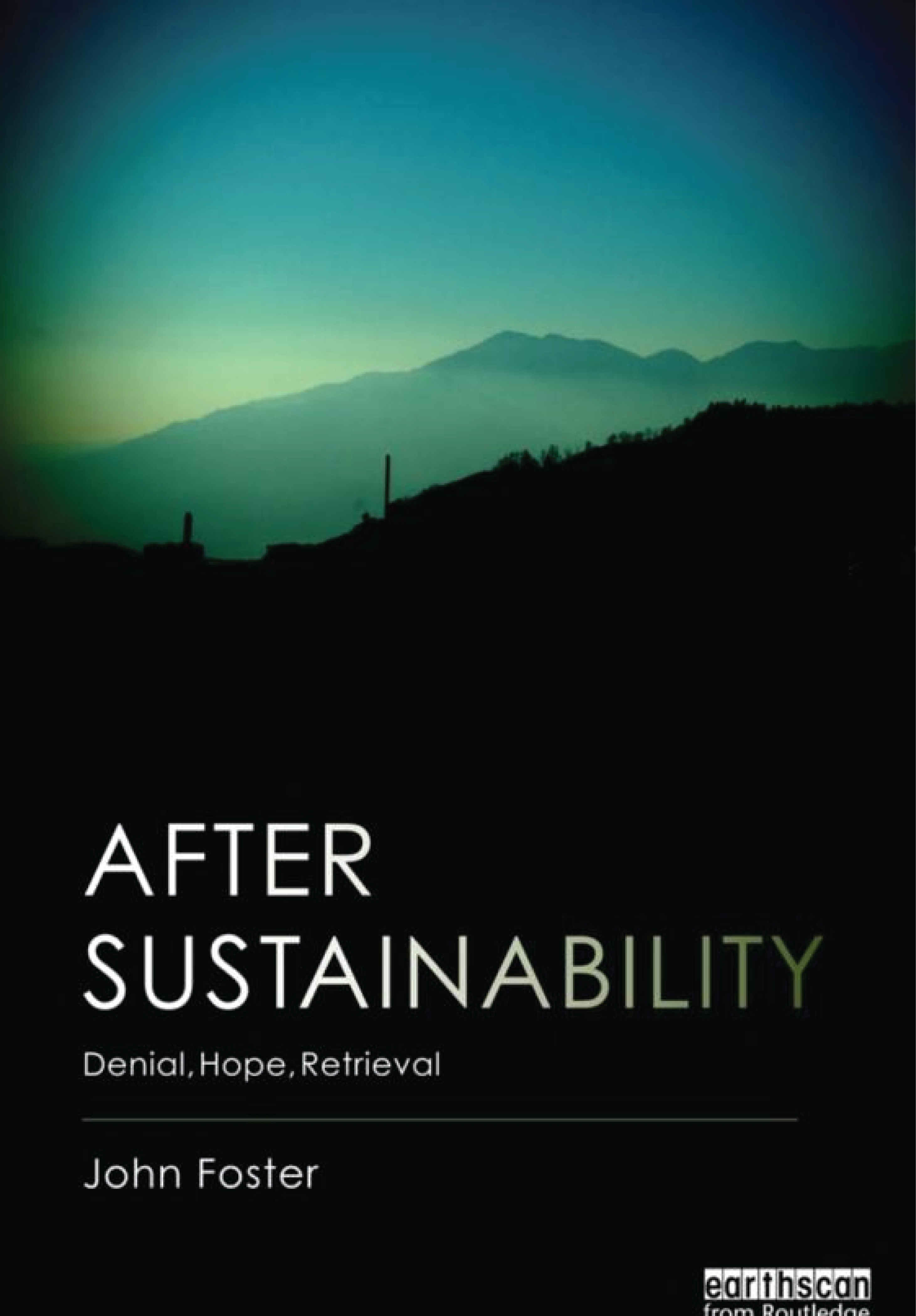
We will need international action such as Contraction and Convergence, the Oil Depletion Protocol, Strong international climate legislation and a moratorium on biodiesel production.
After Sustainability: Denial, Hope, Retrieval By John Foster
01 September 2014 - "C&C offers a simple model on which international agreement can be based." John Blewitt Aston Business School
Creative Policy Solutions: Contraction and Convergence
Aubrey Meyer, musician and composer, former member of the UK Green Party and co-founder of the Global Commons Institute in 1990, is an active promoter of climate mitigation through ‘Contraction and Convergence’ - a practical and equitablc approach to combating climate change. He believes that those economists who argue that climate mitigations is too expensive a policy option effect ively condone the murdering of many of the world's poor. He argues (Meyer 2000) that although greenhouse gas emissions have been accumulating in the atmosphere as a result of industrialization for over 200 years, suggesting that in principle every citizen on the planet has an equal right to emit, there must be an equitable individual allowance based on safe global emissions targets provided by the best scientific understanding available.Contraction and Convergence offers a simple model on which an international agreement on greenhouse gas emissions can be based.
It can be achieved in three stages: -1 securing an agreement on a cap on CO2 concentrations in the atmosphere;
2 calculating the speed at which emissions need to be reduced to reach that target;
3 calculating the consequent total carbon budget and allocating a per capita allowance throughout the world.The result will be that per capita emissions from each state wil converge at a fair level while the global sum of emissions will 'contract’. Meyer believes that greenhouse gas concentrations should contract to 450 ppm and that convergence to equal per capita emissions should be achieved by 2030. This process requires the creation of a carbon currency, which could finance clean technology and eradicate Third World debts, combat global poverty, and minimize the economic differences between the developed and developing worlds. As Flannery (2005) notes, this ‘strong medicine,' could be the foundation for a new Kyoto that does away with ‘free-riders’ but will mean definite political and economic costs for the developed nations. Contraction and Convergence is thus a vehicle for achieving global equity not only in CO2 emissions but also in economic wealth, prsoperity and human well-being. The rich nations of the North are by far the biggest emitters of greenhouse gases. Even today, Africa's accumulated emissions are a small fraction of those produced by the UK. But Contraction and Convergence can only be realized of the participation, dialogue, debate and accommodation that is beginning to characterize global politics in major areas of environmental and sustainability policymaking develop further. NGO pressure groups, independent think-tanks, swcientific organizations and corporate and government bodies, which form 'epistemic' or knowledg-based communities must work with rather than against each other if agreement on climate change is to be secured. As Gough and Shackley (2001. p332) write: -
"The science-policy nexus represented by the IPCC and supporters of the UNFCCC Kyoto Protocol, with its inclusion of Government officials, international organizations, scientists, NGOs, business and so on incorporates the key elements of an epistemic community. A distinctive knowledge-based approach to climate assessment and policy has emerged within the IPCC in which the NGOs have been instrumental both as expert advisors and in provideing the legitimacy of inclusiveness needed for the epistemic coalition to have sufficient authority. The fact that environmental NGOs (ENGOS), governmental and intergovernmental actors, the scientific establishement and even some business groups are in coaltion can be atermendously powerful influence. NGOs that have helped to create the climate change epistemic community have needed to move their own terms of reference towards science and technical policy measures and resonses away from ethics and overtly political matters, such is the price of membership of the coalition. This is to shut the door on the use of a range of potnetially useful concepts and devices such as global equity and North-South development."

